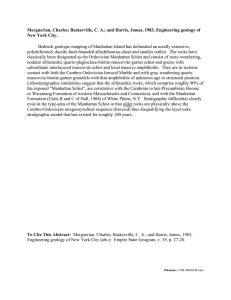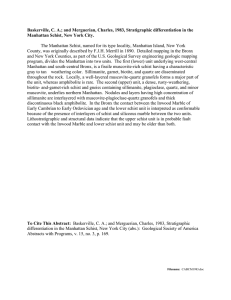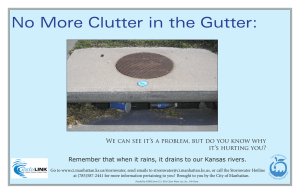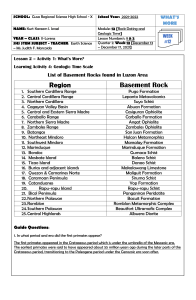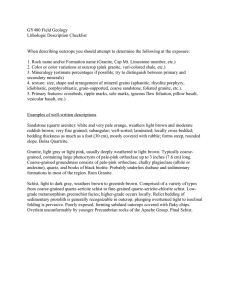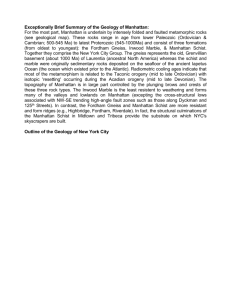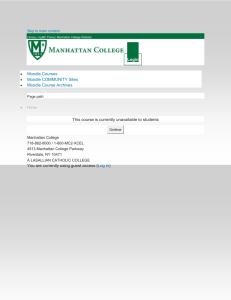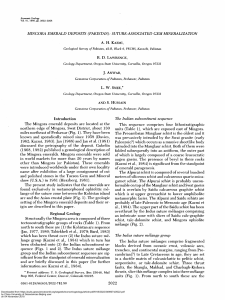Merguerian, Charles, 1984, Revised stratigraphy of the Manhattan Schist, New... Field and petrographic data indicate that the "type" Manhattan Schist... actually consists of three distinctive sillimanite-grade rock units. Two...
advertisement
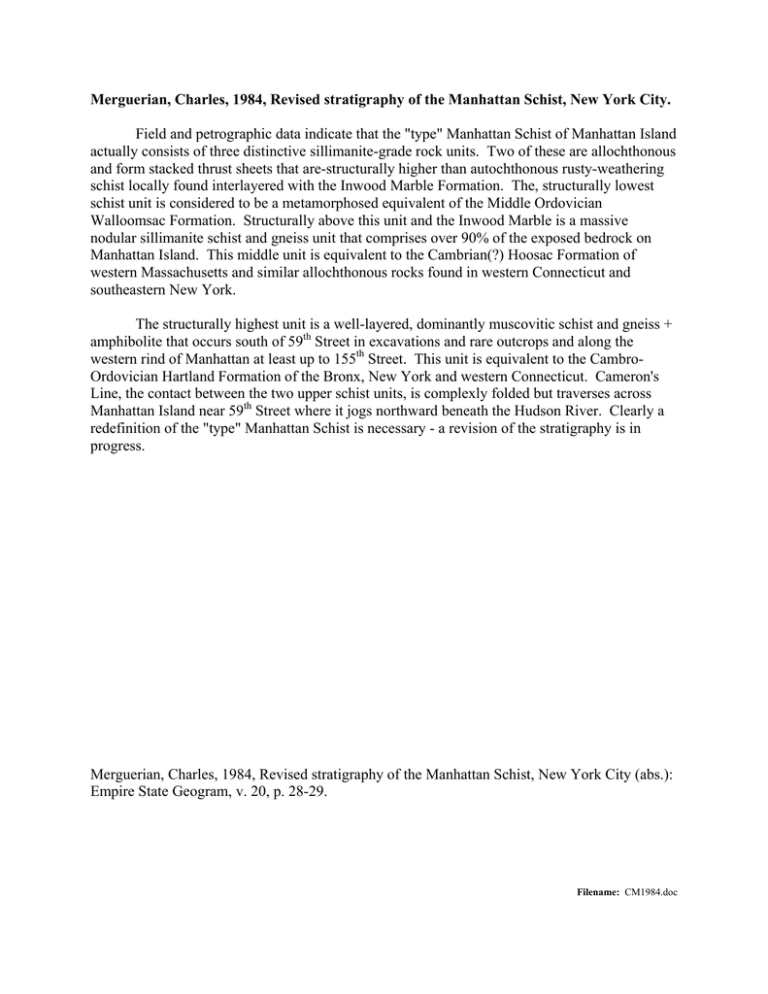
Merguerian, Charles, 1984, Revised stratigraphy of the Manhattan Schist, New York City. Field and petrographic data indicate that the "type" Manhattan Schist of Manhattan Island actually consists of three distinctive sillimanite-grade rock units. Two of these are allochthonous and form stacked thrust sheets that are-structurally higher than autochthonous rusty-weathering schist locally found interlayered with the Inwood Marble Formation. The, structurally lowest schist unit is considered to be a metamorphosed equivalent of the Middle Ordovician Walloomsac Formation. Structurally above this unit and the Inwood Marble is a massive nodular sillimanite schist and gneiss unit that comprises over 90% of the exposed bedrock on Manhattan Island. This middle unit is equivalent to the Cambrian(?) Hoosac Formation of western Massachusetts and similar allochthonous rocks found in western Connecticut and southeastern New York. The structurally highest unit is a well-layered, dominantly muscovitic schist and gneiss + amphibolite that occurs south of 59th Street in excavations and rare outcrops and along the western rind of Manhattan at least up to 155th Street. This unit is equivalent to the CambroOrdovician Hartland Formation of the Bronx, New York and western Connecticut. Cameron's Line, the contact between the two upper schist units, is complexly folded but traverses across Manhattan Island near 59th Street where it jogs northward beneath the Hudson River. Clearly a redefinition of the "type" Manhattan Schist is necessary - a revision of the stratigraphy is in progress. Merguerian, Charles, 1984, Revised stratigraphy of the Manhattan Schist, New York City (abs.): Empire State Geogram, v. 20, p. 28-29. Filename: CM1984.doc
